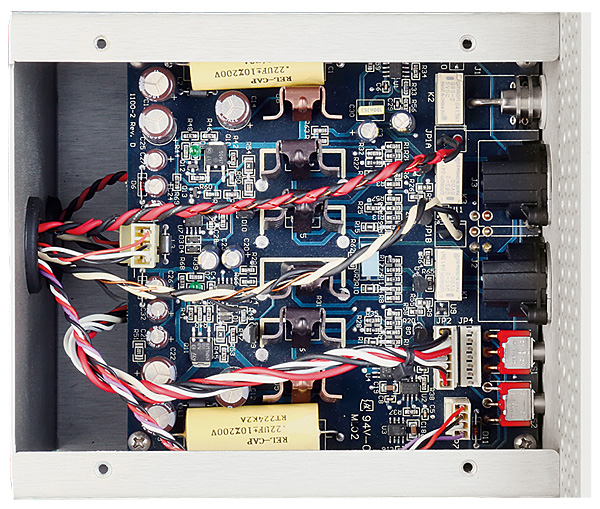Constellation Centaur II Stereo Power Amplifier Quasi-Complementary
All Constellation amplifiers share a novel circuit 'concept' – a 125W/8ohm power module employing N-type MOSFETs in a single-ended configuration. Constellation's balanced/bridged topology sees one set of modules handling the negative-going portion of the audio signal, the other the positive, both with their own power supply. Constellation posits that these N-type FETs deliver better symmetry than 'matched' N- and P-type devices might achieve in a conventional complementary circuit. Inside the Centaur II Stereo there are two pairs of these 125W modules per channel, delivering rather more than the rated 2x250W/8ohm, and driven either directly or via a balanced J-FET input stage [see inset shot].

The latter adds a further +14dB gain to the amplifier, bringing the total to +26dB, and while it may seem counterintuitive, the subjective performance of the Centaur II Stereo is often preferable with this extra stage in tow. Why? The partnering preamp will necessarily run at lower gain and the J-FET stage may arguably provide better balanced 'signal conditioning' before the audio signal hits those N-channel modules. There are measurable differences too – distortion is 0.007-0.027% in Balanced mode but increases to 0.01-0.05% in Direct Mode (all 20Hz-20kHz at 10W/8ohm). On the other hand there's a huge improvement in A-wtd S/N from 87.1dB (Balanced) to 99.1dB (Direct) simply as a function of bypassing the J-FET input stage. Which will you prefer? PM























































